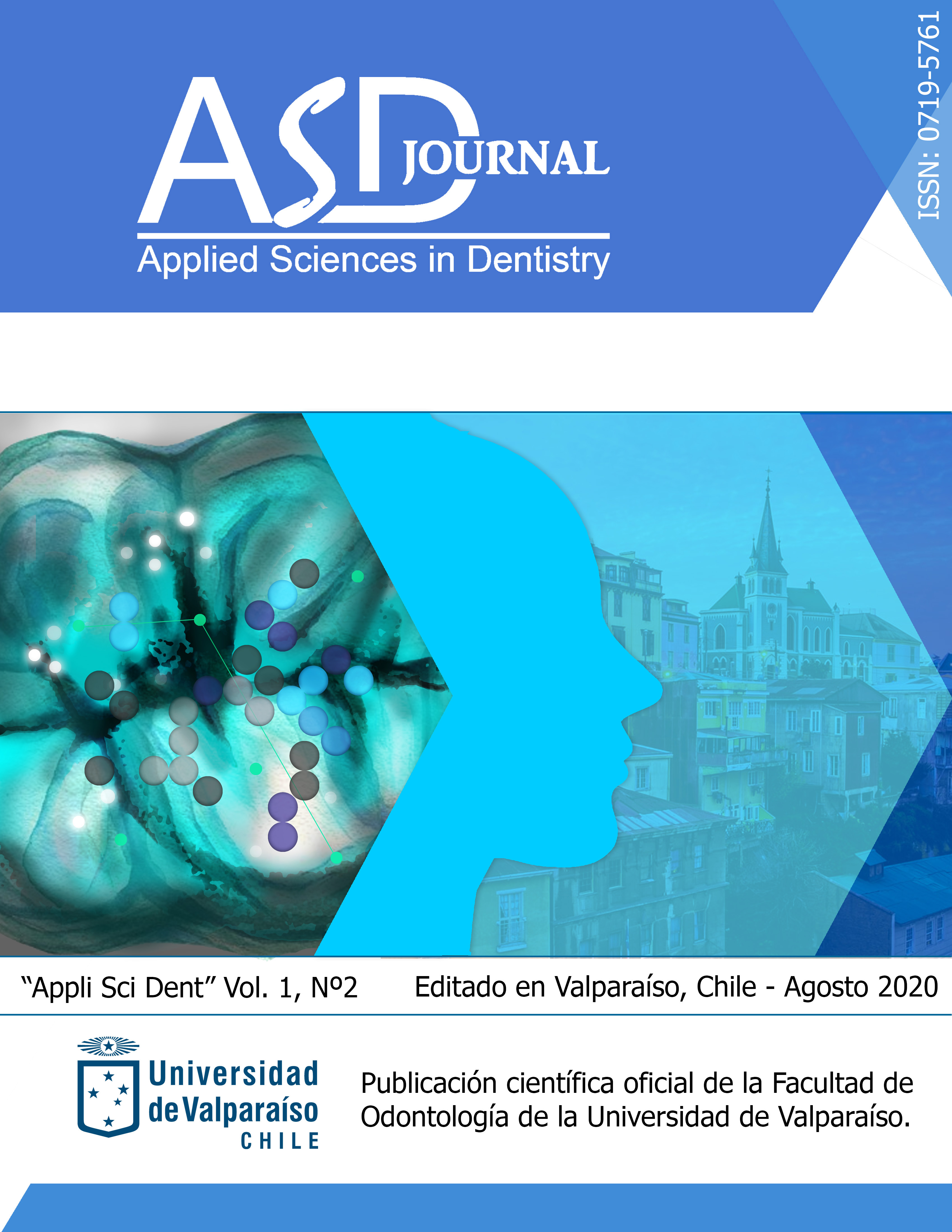IN VITRO DETERMINATION OF MINIMUM LENGTH PENETRATION OF A 27G MONOJECT NEEDLE TO IRRIGATE THE MAIN CANAL, AVOIDING EXTRUSION
DOI:
https://doi.org/10.22370/asd.2020.1.2.2415Keywords:
Endodontic irrigation, sodium hypochlorite, extrusion, endodontic treatment, endodonticAbstract
Objective: To determine the minimum length penetration required of a monoject27G needle to irrigate the main canal, avoiding extrusion.
Materials and methods: 52 teeth were used, decoronated and worked at equal lengths at a MAF 40. They were randomly assembled in 3 molds and irrigated with diluted Omnipaque. Central trend values were calculated using descriptive statistics. Barlett, Shapiro Wilk and ANOVA one-way tests were applied to analyze statistically significant differences. Subsequently the logistic regression of Oswell-Lemeshow was calculated to look for causality between variables.
Results: Statistically significant results show that at higher needle penetration, the probability of extrusion is greater; regarding minimal length penetration to prevent extrusion, the safest length to irrigate is working length (WL) -4mm.
Conclusions: The minimum length penetration to irrigate preventing extrusion is WL-4 mm.Downloads
Downloads
Published
How to Cite
Issue
Section
License
Authors retain copyright and grant the journal right of first publication with the work simultaneously licensed under a Creative Commons Attribution 4.0 International License that allows others to share the work with an acknowledgment of the work's authorship and initial publication in this journal.
Authors are able to enter into separate, additional contractual arrangements for the non-exclusive distribution of the journal's published version of the work (e.g., post it to an institutional repository, in a journal or publish it in a book), with an acknowledgment of its initial publication in this journal.
Authors are encouraged to post their work online (e.g., in their institutional repositories or on their website) only after publication online.
When uploading, disseminating or repurposing Open Access publications, the journal should be clearly identified as the original source and proper citation information provided. In addition to the Version of Record (final published version), authors should deposit the URL/DOI of their published article in any repository.


